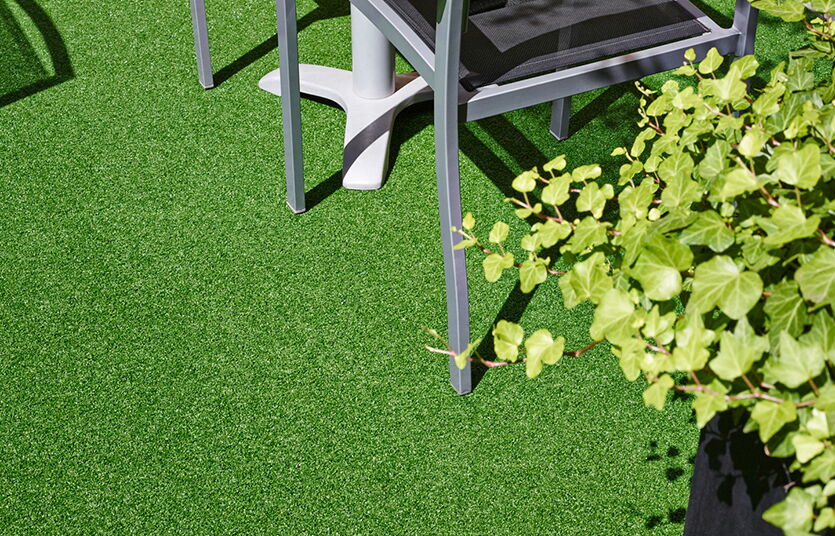Tips for choosing the most appropriate artificial grass
Which type of artificial grass do I choose, depending on where I want to install it? What do I have to keep in mind when choosing my lawn? Deciding which artificial grass you have to buy is not an easy decision and therefore we want to give you some tips to get through this dilemma easily.
A mistake often made is to only focus on the price. We admit that this is of course a very important factor, but it should not lead to neglecting other essential aspects that guarantee that your artificial grass meets your expectations.

What to keep in mind when choosing your artificial grass
There are several aspects that you have to take into account when deciding what type of artificial grass is best for you. We, at Turfgrass, would like to mention some of the most important aspects here:
1. Type of lawn
If you are looking for a specific type of grass (for example, artificial grass for tennis or for soccer), the best is choosing a type of grass specifically created for that purpose. Especially when you need artificial grass that will serve as a sports surface, you can be rest assured that your artificial grass complies with the guidelines of the corresponding sports federations. Turfgrass artificial grass for paddle, for example, is recommended by the Spanish Paddle Federation.
Even for landscaping purposes you should keep in mind which purposes you want your artificial grass to serve. The Turfgrass products for terraces or rooftops are slightly different from those for a big garden.
2. The colour
Colour is another very important aspect when choosing artificial grass. It should have realistic tones and saturation. The mixture of fibres of different shades can make it more similar to natural grass, keep in mind that natural grass does not tend to be absolutely green. A little controlled imperfection is always adequate.
3. Resistance to foot traffic
Unlike fibrillated lawns, monofilament lawns tend to have better tread resistance. Keep this in mind if you want to install a lawn to practice sports, or if you receive many visitors in your garden.
It is important for an artificial turf to have a good resistance to foot traffic. When you step on a fibrillated lawn, the artificial grass tends to become shabby and loses its freshness. In case of a monofilament lawn, it has a memory effect that helps it to recover to its normal height.
4. Density
The density of artificial grass is typically expressed in Dtex. The more stitches the artificial grass has, the denser it will be. A dense artificial lawn looks more natural than a not so dense lawn. The density of the product can also influence the resilience and recovery of your lawn. It’s up to you to determine whether you prefer a dense and bushy look and if the density is also needed because your garden is subject to heavy foot traffic.
5. Price
Lastly, of course price is also an important factor. We recommend you to look for artificial grass at an affordable price that suits your goals, so it allows you to install your lawn comfortably. And keep in mind that after 2-4 years your artificial lawn will be paid off completely and will be cheaper than natural grass.